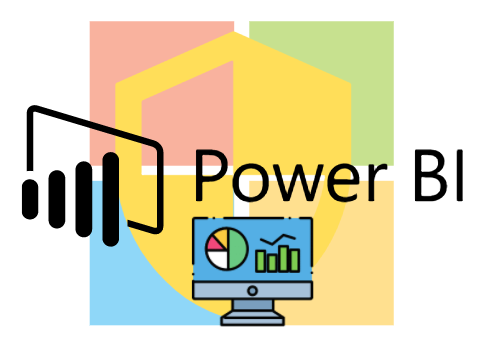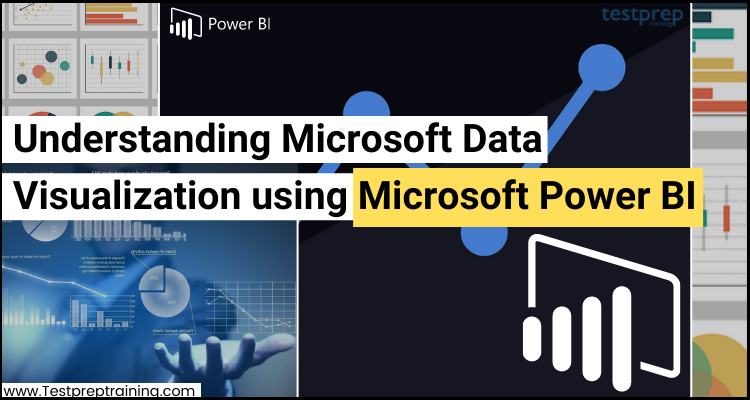Power BI (Business Intelligence) has shown to be a valuable tool for creating a data-driven culture and empowering employees at all levels to make confident decisions based on smart analytics. Power BI reduces the expense, complexity, and security risks of various solutions by employing a self-service analytics platform. Further, Power BI also provides the capacity to identify and share significant insights with hundreds of data visualization, built-in AI capabilities, robust Excel integration, and data security features such as end-to-end encryption and real-time access monitoring, according to Microsoft’s support. Moreover, using the data visualizations, Power BI is able to provide solutions with more clarity.
To better understand, in this blog, we will be covering the areas of data visualizations in Power BI in order to recognize its importance and how it is useful. Let’s begin with a quick overview of Power BI.
What is Power Business Intelligence (BI)?
Power BI refers to a set of software services, apps, and connections that operate together for turning unstructured data into logical, visually engaging, and interactive insights. The date here, however, may be an Excel worksheet or a collection of cloud-based hybrid data warehouses. It also makes connecting to your data sources simple by displaying and identifying what’s relevant. You can also share that information with anybody you choose.
Further, there are some parts of Power Business Intelligence that all work together:
- Firstly, Power BI Desktop (Windows desktop application).
- Secondly, Power BI service (Online SaaS (Software as a Service) service).
- Thirdly, Power BI mobile apps (for Windows, iOS, and Android devices).
- Fourthly, Power BI Report Builder (generating paginated reports for sharing in the Power Business Intelligence service).
- Lastly, Power BI Report Server (on-premises report server for publishing Power Business Intelligence reports, after generating them in Power Business Intelligence Desktop).
But what is the role of data visualization? Let’s understand with an overview of data visualization.
What is data visualization?
Data visualization can be considered as the graphical representation of information and data defined in an accurate manner. This tool makes it easy for examining and comprehending trends and patterns in data. This is done by utilizing visual components like charts, graphs, and maps. So, basically, the process of converting big data sets and measurements into charts, graphs, and other graphics is known as data visualization. Furthermore, the associated visual representation of data makes it easier to recognize and communicate real-time trends, and new insights about the data’s source.
Stunning, interactive data visualizations targeted to your business and industry will bring your data to life.
Uses of Data Visualization
1. Making complex topics compelling and accessible
By using graphics to anchor data storytelling to facts, your audience will be able to engage with the material. With eye-catching images that help you engage with your data and make educated decisions fast, you can share insights more effectively and boost comprehension, retention, and appeal.
2. Seeing data visuals in action
With this interactive flight engine diagnostics representation, see how data visualization converts complex information into something that’s easy to share and comprehend.
3. Quickly begin with hundreds of visuals
With a comprehensive collection of data visualizations, you can start displaying your data in seconds. In AppSource, you may find hundreds more. Moreover, Microsoft has tested and certified each graphic to ensure that it works smoothly with Power BI and provides useful information.
4. Building visuals to your specifications
If you can’t find what you’re looking for in AppSource, you can easily make it yourself. That is to say, customize data visualizations to your needs and industry to set your company apart and create something unique. Moreover, you can quickly share what you’ve developed with your team or publish it to the Power BI community after they’re finished.
5. Getting self-service analytics at an enterprise scale
With an analytics platform that expands from people to the entire enterprise, you can cut the expense, complexity, and security concerns of many solutions.
7. Using smart tools for strong results
Hundreds of data visualizations, built-in AI features, tight Excel interaction, and prebuilt and customized data connectors let you find and share relevant insights.
8. Helping protect your analytics data
You can keep your data safe with industry-leading data security features including sensitivity labeling, end-to-end encryption, and real-time access monitoring.
Moving on, in the next section, we will take a look at the major concepts of Power BI.
Power Business Intelligence (BI) concepts
Datasets, reports, and dashboards are the main components of Power BI. They are, however, all divided into workspaces with built-in storage.
1. Capacities
Capacities are a basic Power BI concept that refers to a collection of resources needed to host and distribute business intelligence material.
2. Workspaces
In business intelligence, workspaces refer to a container for dashboards, reports, datasets, and dataflows.
3. Datasets
A dataset is a collection of data that you import or link to. Power Business Intelligence, on the other hand, allows you to link and import a variety of datasets and bring them all together in one spot.
4. Reports
A Power BI report is a collection of visualizations such as line charts, maps, and treemaps on one or more pages. You may, however, develop reports from scratch in Power BI and then import them using dashboards shared by peers.
5. Dashboards
A dashboard is something you build and share with others using the Power BI service. This is a single canvas with 0 or more tiles and widgets on it.
6. Visualizations
A visual representation of data, such as a chart, a color-coded map, or other exciting things you may make to represent data graphically, is referred to as visualization. There are several types of visualizations available in Power BI. They are, however, as basic as a single number that denotes something important.
7. Template Apps
Power BI partners can now create Power BI applications with no coding. And then, they can use them for any Power BI customer using the new Power BI template apps. You may, however, construct template applications that allow your clients to log in to their accounts from within their own accounts.
But, the question that arises here is why use power bi with data visualizations? So, let’s find out!
Why Microsoft Power BI?
Let’s discover why businesses choose Power BI to satisfy their self-service and corporate business intelligence (BI) requirements.
Using Power BI:
- Firstly, to meet your compliance and regulation demands, you can create and distribute interactive data visualizations across global data centers, including national clouds.
- Secondly, with Power BI Desktop and Power BI Pro, you can create a data-driven culture across your business by providing everyone with BI and analytics tools.
- Thirdly, get regular updates that improve Power BI features and capabilities, based on thousands of ideas provided yearly by a community of over half a million people across the world.
- Next, on this single platform, you can meet your self-service and enterprise data analytics demands. And, access strong semantic models, an ALM toolset, an open connection architecture, and pixel-perfect paginated reports in a fixed-layout format.
- By using Power BI with Azure to connect, combine, and analyse your entire data estate, you can turn your data into a competitive advantage.
- Then, use Microsoft AI to,
- assist non-data scientists in preparing data
- building machine learning models
- fast finding insights from both structured and unstructured data, including text and pictures.
- Using simple visual indicators in deployment pipelines, quickly identify differences and confidently transfer content from development and testing to production.
- Moreover, excel queries, data models, and reports may be readily connected to Power BI Dashboards by anyone who is familiar with Microsoft 365. This allowis them to swiftly acquire, analyze, publish, and share Excel business data in advanced ways.
- Lastly, you can know what’s going on right now, not in the past. Get real-time insights from manufacturing sensors to social media sources so you’re always prepared to make quick judgments.
Coming on the uncompromising security!

Power BI Data visualization: Security
- Firstly, you can work from anywhere with confidence and communicate freely thanks to continuous data protection that works both within and outside your company.
- Secondly, with monitoring, adoption reporting, easy governance, and intelligent data protection, you can drive best practices and respond fast to security threats.
- Thirdly, with top cloud access security, information protection, and unified endpoint management, you can get the most out of your security investments.
- Fourthly, using features well beyond row- and column-level security across Power BI, Microsoft 365, and Azure, quickly find the correct insights and maintain peace of mind.
- Next, use optimized security. This states:
- From the tenant level down, rely on a trusted industry leader for security and data encryption.
- With Power BI and the Microsoft Cloud App Security portal, you can identify and analyze unsafe behavior patterns.
- To prevent data from being exposed to the public internet, use Azure technologies. This can be Azure Private Link, service tags, and Azure Virtual Network.
- Lastly, with Virtual Network support, you can reduce the risk of network intrusions by implementing effective permission restrictions and network isolation.
Summarizing
Small and big organizations alike are becoming data-driven, with data being used to make choices about sales, recruiting, objectives, and other data-related topics. With the use of its software services, applications, and connections, Power BI creates graphically engaging and interactive data visualizations. Furthermore, generating rapid insights from an Excel workbook or a local database helps companies and enterprises in understanding their goals, sales, and acquisitions. Additionally, you may utilize the Power BI service to:
- Firstly, make it simple to connect to your data sources.
- Secondly, you may clean and model your data without affecting the source.
- Lastly, visualise what’s important and share it with anyone or whomever you choose.



